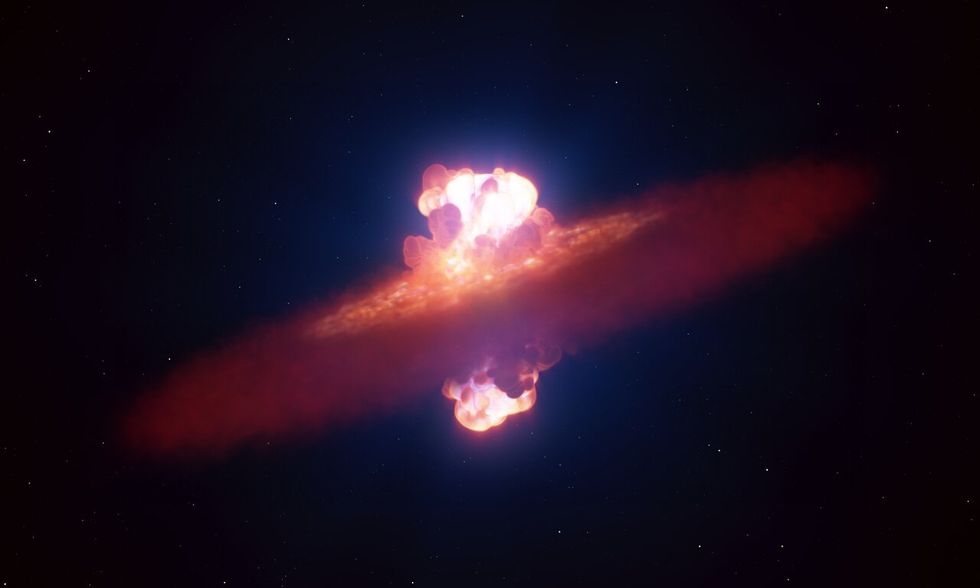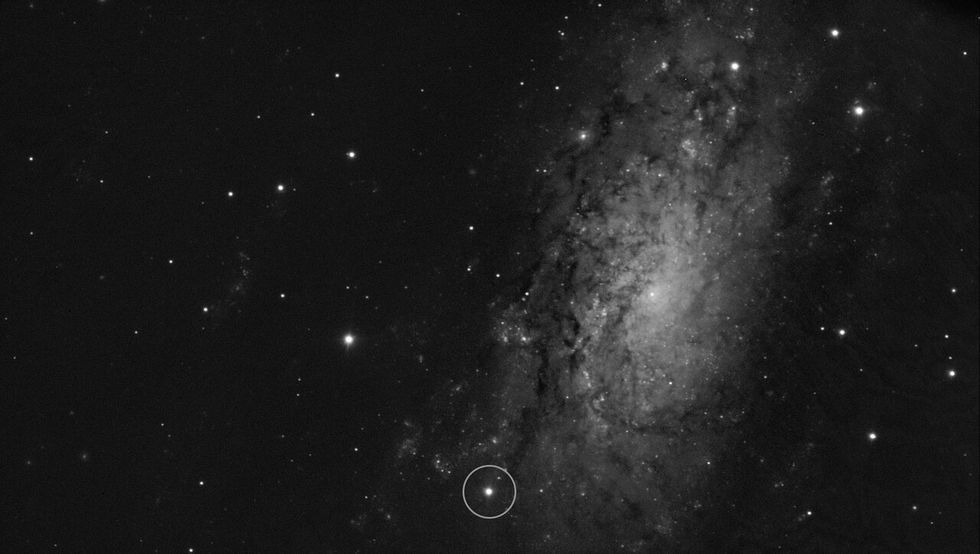Groundbreaking new images show moment supernova is born in violent space inferno
The new pictures could help upend our understanding of how supernovae come to be
Don't Miss
Extraordinary new images have been released showing the moment a supernova was born in a violent space inferno.
The breakthrough study managed to capture the "shock breakout" - the point when a massive star dies and a supernova is created - which had previously never been seen due to its fleeting nature.
SN 2024ggi, a new supernova, erupted on April 10 last year 22 million light years away in the galaxy NGC 3621 - near the Hydra constellation, in relative terms.
Yi Yang of Tsinghua University in Beijing received an alert revealing the detection of the supernova as he stepped off a flight to San Francisco.
Acting with haste, he sent an "observing proposal" to the European Southern Observatory (ESO) within hours.
The ESO, an organisation made of 16 member states which focuses on ground-based astronomy, approved the proposal.
A day later, the Very Large Telescope (VLT) in Chile was watching the star as it died.
Dietrich Baade, an astronomer at ESO and co-author of a new study published in the journal Science Advances, said: "The first VLT observations captured the phase during which matter accelerated by the explosion near the centre of the star shot through the star's surface.
"For a few hours, the geometry of the star and its explosion were observed together."

PICTURED: An artist's impression of the supernova exploding
|ESO
The research team used spectropolarimetry, a technique uses analysis of the orientation of light waves to infer the geometry of their course, to see the shape of the explosion as it started.
This meant that although the dying star appeared as a single point, the polarisation of its light allowed scientists to learn about its shape.
Before its death, the star had been a red supergiant - around 12 to 15 times the mass of the sun and 500 times its radius.
This made it a typical candidate to create a core-collapse supernova.
NEWS FROM OUTER SPACE:

PICTURED: SN 2024ggi, a new supernova, erupted in the galaxy NGC 3621 in the direction of the constellation Hydra
|ESO
Throughout its lifetime, the star maintained a balance between its gravity and the nuclear explosion at its heart, which powers it.
However, this balance was then disrupted as the star's nuclear furnace began to diminish, meaning gravity took over.
As a result, the core imploded before rebounding and producing a shockwave which rippled through the star's outer layers.
The FORS2 instrument on the VLT allowed scientists to watch the scene - and they noted a striking revelation.
The explosion of the star was "olive-shaped", meaning it happened faster on one axis than the other, even as the blast expanded and the shape flattened.
Researchers believe this proved that something within the star continued to keep it "in order" even as it died.
Mr Yang said: "These findings suggest a common physical mechanism that drives the explosion of many massive stars."
Ferdinando Patat, an astronomer with ESO and another co-author of the study, said: "This discovery not only reshapes our understanding of stellar explosions, but also demonstrates what can be achieved when science transcends borders.
"It's a powerful reminder that curiosity, collaboration, and swift action can unlock profound insights into the physics shaping out universe."










